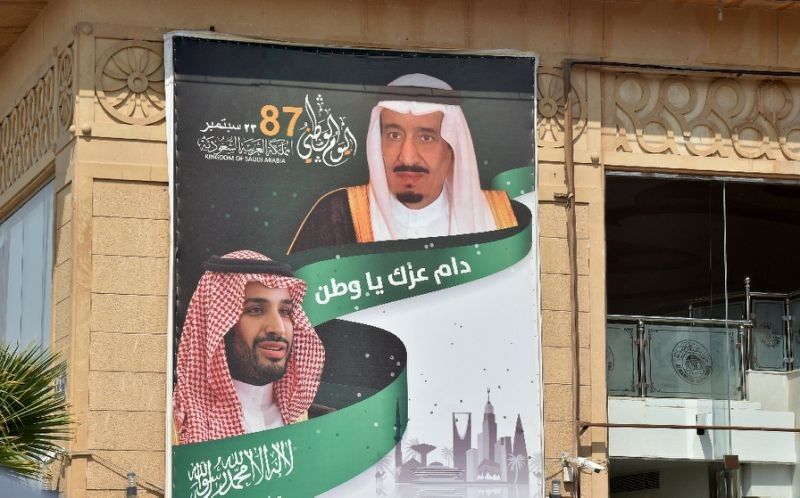Saudi Arabia's ruling dynasty

Dubai - The Al-Saud dynasty, which has ruled Saudi Arabia since the early 20th century, has found itself embroiled in one of its worst international crises since the disappearance of Jamal Khashoggi.
The Saudi journalist -- a critic of the ultra-conservative kingdom -- was last seen entering his country's consulate in Istanbul on October 2. Turkish officials have accused Saudi Arabia of a state-sponsored killing, but Riyadh denies the allegations.
Here is a look at the ruling family and the system of succession.
- Who are the Al-Saud? -
The Al-Saud trace their origins back to the 1700s, when Saud bin Mohammed reigned as a local sheikh in the central Arabian peninsula, which would two centuries later be the birthplace of Saudi Arabia -- named after the family.
His son, Mohammed, allied himself in 1744 with a fiery cleric, Mohammed bin Abdul Wahhab, who advocated a return to purist Islam and spread the doctrine through power of the sword.
Mohammed's descendants lost control to Ottoman forces in 1818, but six years later the Al-Saud family retook the desert seat of Riyadh. The second state lasted until 1891 and ended at the hands of Al-Rasheed from the Shammar tribe.
Deposed ruler Prince Abdulrahman al-Saud fled to Kuwait, after which the British helped his son Abdul Aziz return and recapture Riyadh 11 years later.
By 1902, Abdul Aziz bin al-Saud had expelled the rival Al-Rasheed clan from Riyadh, at the heart of the peninsula, and set about consolidating his power to form Saudi Arabia.
He unified the territories after a series of tribal wars.
He took control of the Gulf coast in 1913, expelled Hussein, the Hashemite sharif of Islam's holy city of Mecca, by 1925 and in 1932 declared himself king of Saudi Arabia.
Oil was struck in 1938 in the strictly conservative Wahhabi kingdom, transforming it into one of the world's richest countries.
- How does succession work? -
Under Saudi law, the monarch must be a descendant of Abdul Aziz, who died in 1953.
Since then, the throne has passed laterally from one of his sons to another.
The kingdom has a "Council of Allegiance" to decide on the succession, a committee comprising Abdul Aziz's descendants.
On the death of a king, the committee to formally declare the crown prince as the new ruler.
The new monarch must then propose to the council within 10 days his candidates for the post of crown prince.
The council chooses a crown prince from up to three candidates put forward by the king, but it has the authority to reject them all and put forward its own name.
The king can reject its nominee and the committee then has a month to vote on either the king's candidate and its own.
In essence, the crown prince has usually been selected by informal consensus within the royal family.
- From father to son? -
Abdul Aziz had 45 sons on record. King Saud succeeded the kingdom's founder upon his death in 1953.
But Faisal took over on November 2, 1964 after his half-brother was deposed on charges of corruption and incompetence. Saud died in exile in 1969.
The architect of Saudi Arabia's modernisation, Faisal was assassinated by a nephew in March 1975.
Khaled, another half-brother, took over and ruled until his death in 1982, when Fahd became king, appointing Abdullah, two years his junior, as crown prince.
After Fahd suffered a stroke in November 1995, Abdullah his half-brother acceded to the throne.
Salman rose to the throne in January 2015 after Abdullah's death, becoming the last of the bloc of brothers known as the Sudairi Seven, after their mother Hassa bint Ahmed al-Sudairi, to rule.
- How have things changed? -
Salman's generation has wielded power for more than 60 years through a lateral succession of brothers and half-brothers, creating a delicate balancing act between several important family lines.
But Salman made key changes in the order of succession. His son, 33-year-old Prince Mohammed bin Salman, known as MBS, was promoted to defence minister, before becoming crown prince in June 2017.
The heir apparent meteoric rise has seemed almost Shakespearean in its aggression and calculation. In June, he edged out a 58-year-old cousin, Prince Mohammed bin Nayef, to become heir to the throne.
If he succeeds as king, foreign diplomats predict MBS could well be in control of Saudi Arabia for at least half a century.
- What impact the Khashoggi crisis? -
The potential fallout from the Khashoggi incident is hard to predict.
The crown prince's foreign policy including a ruinous war in Yemen and centralisation of power has triggered opposition towards him from within the royal family, the business elite and the religious establishment.
"Opposition to the young crown prince in the ruling family will most likely grow," warns Eurasia Group, a risk consultancy.
"There are elements of the Al-Saud family that are convinced that the prince is reckless and compromising the security of the country," it added.
A family coup has been rumoured before and would not be unprecedented in Saudi Arabia, says research firm Capital Economics.
Officially, the 82-year-old monarch can change the youthful crown prince, but some analysts say that possibility appears remote.
- Latest
- Trending































